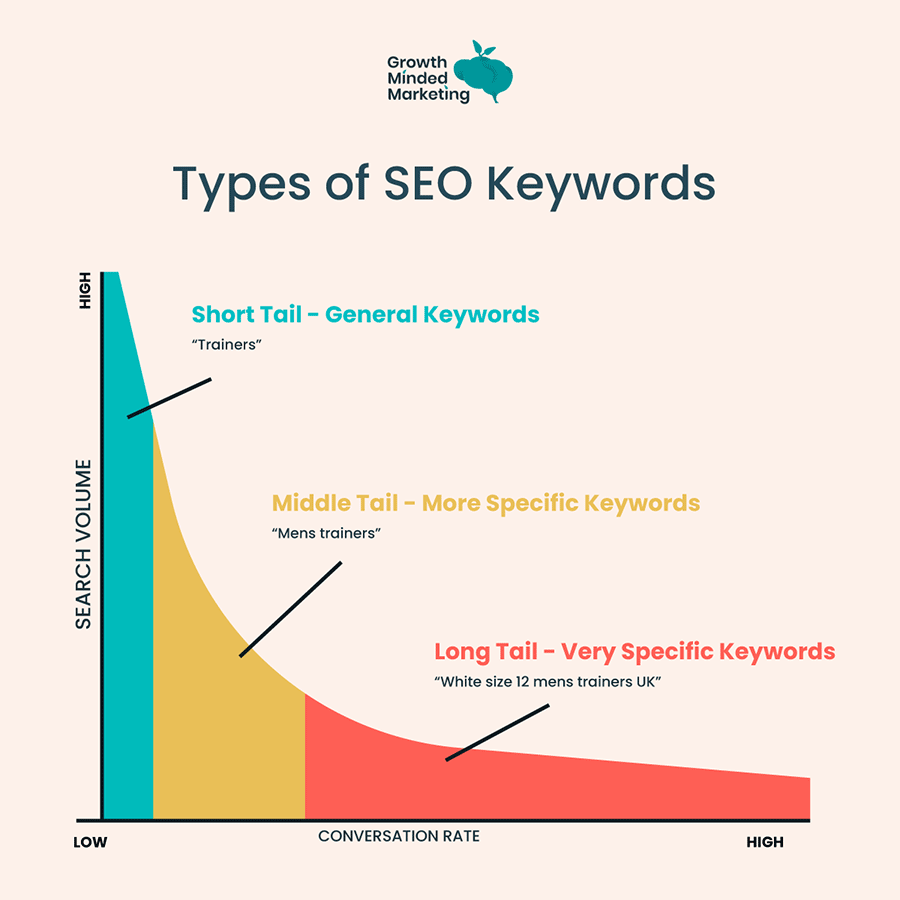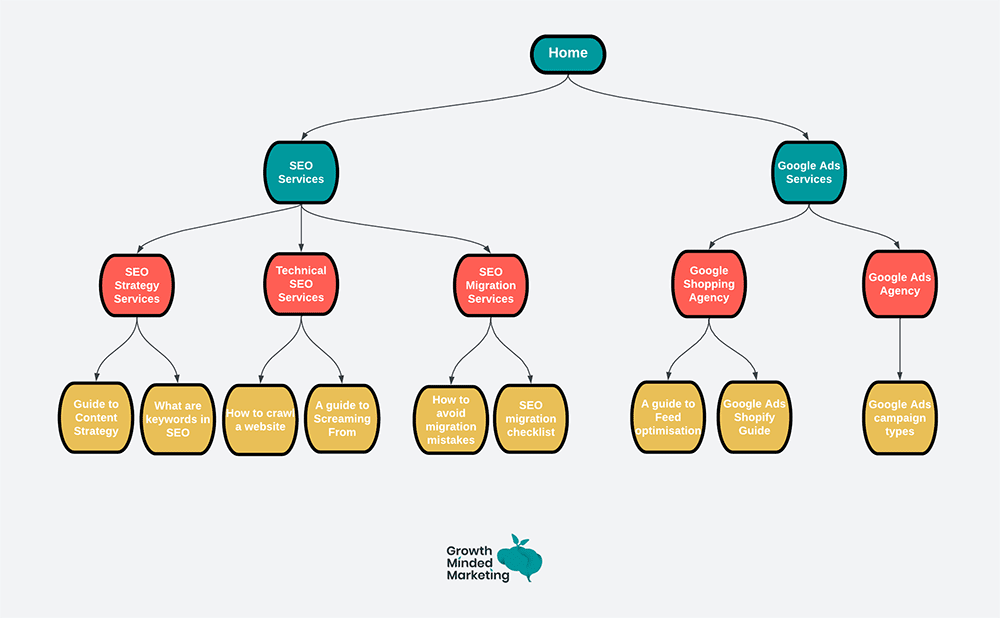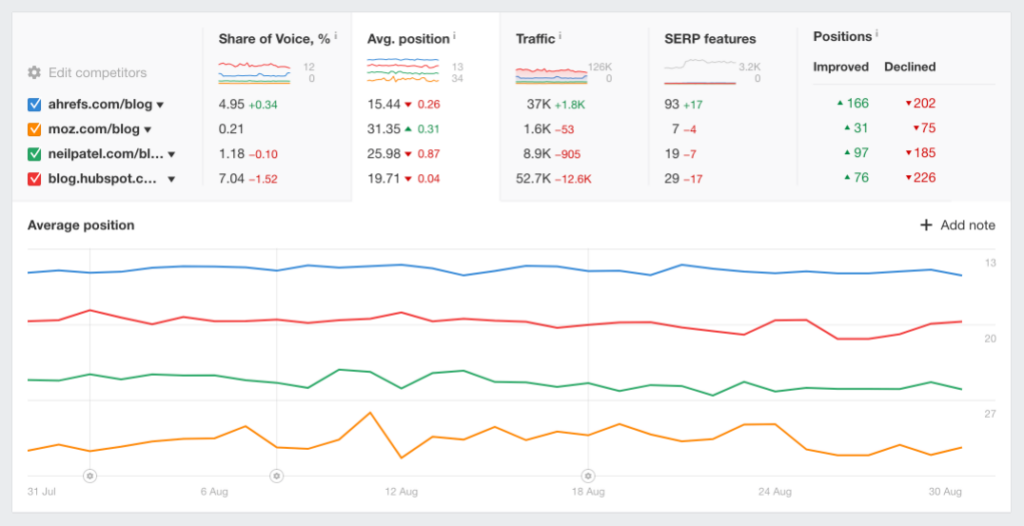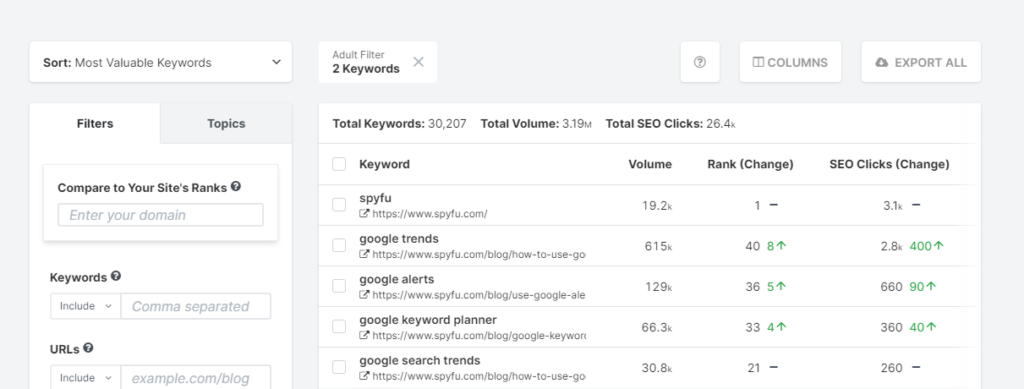There was a time when you could easily rank on the first page of Google with keyword stuffing and by hitting a certain keyword density.
Things changed.
Not just Google, but other search engines have now become smarter and better at understanding search queries.
Search engines have moved from a search-first to a people-first approach and this has changed the way you use keywords for SEO in your content.
You’ve to update your SEO and keyword strategy significantly (no less than 180 degrees) to stay relevant and at the top of the SERPs today.
Let’s find out how…
Table of Contents
ToggleWhat are keywords in SEO?
Keywords in SEO refer to phrases and terms that you use in your content to make it easy for people and search engines to find your content on the web.
Keywords help you improve the ranking of your website in SERPs as search engines can better understand the context and content of the webpage which helps in indexing.
There are several ‘types’ of keywords:
- Broad keywords
- Short-tail keywords
- Long-tail keywords
- Mid-tail keywords
- Seed keywords
- Niche keywords
And many others.
Here’s an example of how search volume and conversion rate change as you move from short-tail to long-tail keywords:
What keywords you target defines the number of impressions, conversion rate, user engagement, competition, and other metrics.
Why are keywords important in SEO?
Keywords are the backbone of SEO and content marketing.
Whilst this is still true, the role and importance of keywords in SEO have changed over the years.
The way Google (and other search engines) work today is quite different than how they used to work a decade ago. Search engines use search intent to understand the purpose of the search query instead of relying solely on the keywords.
This is what’s known as semantic search which doesn’t rely on keyword matching, rather it’s focused on understanding the query based on the intent and contextual meaning of the search query.
Here’s how semantic search works:
Let’s take a real-life example:
A search query for “what is a project management app” shows you search results that define project management app and have a clear definition:
The results don’t use the term “app” instead they have software and that’s because Google knows that an app and software are the same.
Now, when you run a search query for “project management app”, you won’t see definitions but rather a list of apps and articles that list the best project management tools.
This is because Google knows your intent is not to understand what a project management app is, but you are more interested in buying an app:
This means your content can rank for a keyword that you’re not actively targeting as long as your content fulfils search intent.
And this is the exact reason why keywords are so important in SEO even today.
They help you understand search intent so that you can reach them through search engines. SEO and keywords don’t generate demand, but they help you capture existing audiences from search engines.
Keywords are important because:
- They help you understand the search intent
- They help you create content that your target audience is already searching for
- They improve search visibility and ranking.
4 common SEO keywords use cases
Not sure where and how to use keywords for your business and how they will help you in growing your business?
Here are common use cases where SEO keywords can be used by your brand:
Finding content opportunities and building a content strategy
Keywords simplify the process of finding content opportunities for your blog. You can find topics to cover on your blog using a seed keyword.
For example, if you’ve a website on yoga and need to find topics for the blog, you can start by using “yoga” as a seed keyword to find relevant short-tail and long-tail keywords:
You can use one of these keywords to generate more keywords:
Keep repeating to find unlimited content opportunities that help you in developing a content strategy.
You’ve to create an editorial calendar as part of SEO content strategy for your business which requires a list of keywords (along with titles) to cover.
That’s where you’ll find keywords quite helpful in finding content and interlinking opportunities for the SEO strategy.
Further Reading
Creating a website architecture
Keywords are helpful in defining the website architecture and structure of your website.
Imagine a website with tons of pages and content. It gets quite complicated to keep everything managed and organised.
Intelligently using keywords and categorising content into topics, subtopics, categories, and tags with clearly defined structure makes it quite easy to manage everything:
Here’s another example:
You can group similar topics and keywords which helps you create content hubs (or clusters). This is a useful technique for interlinking and boosting search rankings:
A clear website architecture is important for search engines, visitors, and webmasters.
Search engine crawlers can make sense of your website, content, and keywords when you’ve a well-defined architecture that’s driven by SEO keywords.
Your target audience can easily navigate through your blog and find the exact content it needs.
And as a webmaster, you can keep your website organised – especially if you’ve a large website with thousands of pages and posts.
Measuring performance
SEO keywords help you track, analyse, and compare performance effortlessly.
When you’ve a list of keywords that you target, it gets easier to measure the performance of your content by looking at the rankings.
Tools like Search Console, Analytics, Ahrefs, Moz, and Semrush provide keyword ranking and make tracking keyword performance a piece of cake.
Here’s an example of keyword tracking:
You can also compare your performance against your competitors and compare market share, average position, traffic, and more. Here’s an example:
This type of detailed comparison is only possible when you’ve clearly defined target keywords.
Prioritising content optimisation
Keywords help you figure out what content to optimise. This is achieved by looking at keyword rankings.
There are two key ways you can improve content optimisation with the help of keywords:
- Identifying underperforming pages that aren’t ranking well for the target keyword
- Prioritising optimisation based on the potential traffic increase.
Let’s say you’ve a page that is currently ranking at the first place for the target keyword. But it’s not driving enough traffic and the traffic isn’t converting well.
A deep dive into the content and keyword analysis shows that the content doesn’t target the intent. This means you’ve to significantly tweak content on priority basis to avoid losing the first spot.
These types of insights can be found through analytics or any keyword tool.
How to find keywords for SEO?
You know the importance of keywords for SEO and content marketing, but how do you find keywords that are easy to rank and have potentially low competition?
There are multiple ways to find keywords for SEO as discussed below:
1. Free keyword research tools
Your best bet is to use one or more free keyword research tools.
These tools aren’t as sophisticated as paid ones (discussed below), but they do a decent job. The best free tool to find keywords is Google Keyword Planner which is available to Google Ads users.
It’s free and provides accurate data in terms of monthly search volumes. The data comes from Google so you can trust it.
However, the competition that it shows is based on the ads and not organic search.
Here’s what the tool looks like:
It gives you a detailed list of keywords based on a seed keyword. You can set a location, use multiple seed keywords, and find keywords for both Google and its search partners.
All for free.
Ahrefs has a free keyword tool as well but it doesn’t give you full access to the metrics. It’s a decent option to find out competition and search volume for any keyword. You can view the top 100 keyword ideas for free:
You can’t download the list and can’t get access to all the related keywords without a paid plan.
Your only option is to manually add a keyword, scroll the list, copy and paste to a sheet, and repeat. It’s quite tedious.
This is a reason why most businesses prefer using a paid keyword research tool…
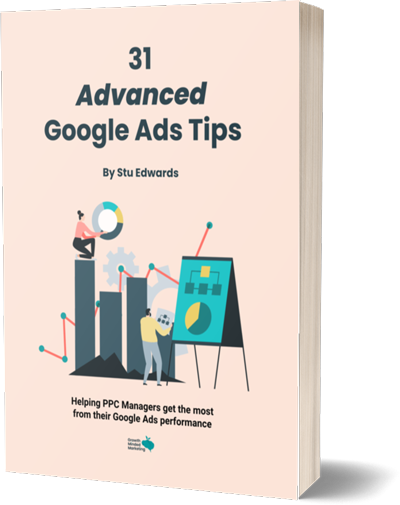
Google Ads tips
Learn advanced tips that PPC professionals use to dramatically increase their Google Ads performance!
2. Paid SEO tools
Premium tools offer tons of features and advanced functionalities that make your life easier. You don’t just get a keyword research tool, rather you get access to a complete suite of SEO tools.
What makes paid keyword research platforms amazing is that they show search volumes of different search engines and platforms including YouTube, Amazon, and others. The data and metrics you get represent organic search instead of PPC data (as you find with free tools).
Does this mean paid keyword tools show more accurate data?
Not really.
No keyword research tool is 100% accurate. The search volumes, competition, and other metrics are estimates and could be close to actual (but not 100% accurate).
And since search volume depends on several factors and changes on a daily basis, it’s hard for any keyword tool to show you accurate results.
For example, the search volume for trending topics like chatGPT was underestimated by most keyword research tools in the early days as they looked at the data from the last 12 months to estimate an average monthly search volume.
Variables like these must be given due thought and appropriate analysis when using any keyword tool.
Here’s a list of the top paid keyword research tools:
3. Competitor analysis
Analysing your top competitors is another way to find SEO keywords for your brand. This is quite helpful when you don’t have much idea of what topics and keywords to cover.
Competitor analysis provides you with tons of useful data:
- Keywords your competitors are targeting and ranking for
- Top traffic generation keywords
- Type of content that generates the most organic traffic
- Keyword rankings
You can analyse competitor blogs manually and prepare a list of keywords they are targeting.
Alternatively, you can use a premium keyword research tool (see above) for in-depth competitor analysis. Or, you can use a dedicated competitor spying tool like SpyFu.
It helps you find lots of information about any website such as keyword analysis, PPC research, keyword research, backlink analysis, shared keywords, top keywords, top pages, and much more:
Competitor keyword research, tracking, monitoring, and comparison is available with almost all the leading paid keyword research tools. You can instantly find hundreds of keywords you can rank for.
4. SERP analysis
A simple, free way to find keywords for SEO is to analyse SERP and find keywords manually.
SERP analysis is probably the best way to understand search intent and get a better idea of what type of content search engines rank for a specific keyword.
You can find several long-tail keywords with search results analysis.
Here are different ways Google SERPs show you keywords that people are searching for:
People also ask is another section in SERPs where you can find relevant questions:
And then Google shows you related keywords at the bottom of the page:
Bing, Yahoo, and other search engines also show relevant keywords and questions. This means you can find free keywords directly from the search engine instead of relying on a third-party tool.
These keywords are accurate, current, and credible because they are based on what searchers are actively searching.
It’s a good idea to look at the SERPs to find trendy, new keywords.
How to use keywords in your content
Search engines now rely on the semantic search that focuses on understanding the searcher’s intent. Search engines don’t use keyword density and other related metrics to understand (and rank) content.
You can rank for a search term without explicitly targeting it or using it in content. This is done by semantic search.
Does this mean you should stop using keywords in your content?
Not necessarily.
What this means is that you don’t have to use keywords to achieve a certain percentage (keyword density). If you are writing a piece of content, there are certain terms that search engines expect to see in your article – based on semantic analysis.
For example, if you are writing an article on “lose belly fat”, search engines would like to see the following keywords in your article:
- Weight loss
- Belly fat
- Belly fat burning
- Belly exercises
- Lose weight from the stomach
- Stomach fat
All these terms are related to the original keyword you are targeting so search engines expect to see them in your content.
Ideally, you should use keywords in content in two major ways:
- Write naturally for humans. Instead of focusing on the target keyword, focus on the topic.
- Cover the topic completely. Add details and answer all the related questions that readers might have.
If your content is geared towards search engines – instead of people – you’ll find yourself in deep trouble. The helpful content update by Google is all about writing content for people and this means covering the topic – not the keyword.
Here are advanced tips and techniques to use keywords in your content:
- Find related keywords and cover them in the content
- Understand the search intent for your keyword and address it. The best way is to see what type of content is ranking on the first page of Google. The type of content that’s already doing well and ranking in SERPs is a true representation of the searcher’s intent
- Cover the topic instead of the keyword. Write about the topic and break it down into different sections
- Use several keyword variations throughout the article
- Use your target keyword in the title, meta description, and at least with the heading tag.
Conclusion
Finding SEO keywords and using them in your content smartly is one hell of a task. Mastering it will give you a massive competitive advantage because that’s the whole point.
When you know what keywords to target and how to rank for them in SERPs, you can literally rule the SERPs and outperform your competition easily.
The hard part is practically doing and implementing it.
Converting a list of keywords into content that drives organic traffic for the years to come isn’t a straightforward task. You need lots of experimentation, experience, skills, and a team to do it.
And we have it all here at Growth Minded Marketing. Our SEO services are backed by years of experience, proven strategies, a highly skilled team, and tried and tested techniques.
Contact us today to see how we can help you create and implement a keyword strategy.

Find out how our SEO management services can help your business grow in 2024


